Note
top 5 rodent list plz (sincerely , another rodent fan!)
i dont think i can rank them... so this is just 5 rodents i lvoe with my heart in no order
1. rattus norvegicus!! brown rat :) aka the species we domesticated!

2. harvest mouse. it has done so mcuh for society i think

3. norwegian lemming. my favorite part of these things is that they will literally attack anything that goes on their territory even humans

4. gambian pouched rat! used to detect landmines and tuberculosis

5. japanese dormouse because it has a back stripe and i like when animals have those :)

1K notes
·
View notes
Note
Somewhat confused. Is a blue fox a color morph of the red fox, or an arctic fox? Thanks for your vulpine wisdom! Love your content.
Blue is a naturally occurring colour morph of the arctic fox. They can be found in both the wild and captivity. The colour ranges from a pale silver to a dark bluish-grey or brown

Unlike the white morph, blue foxes don't change colour in summer and stay the same shade all year round.
There are blueish morphs of the red fox, but they have different names, such as sapphire and pearl. These are only found in captivity, with the exception of San Juan Islands in Washington, USA, where farmed foxes of various colours were released into the wild.
586 notes
·
View notes
Note
Thoughts on Acetabularia?
a single-celled organism that looks pretty and knows when to quit, I give it 9/10

1K notes
·
View notes
Note
Any other birds, apart from cassowaries, that look like dinos?
thick-billed ravens rank pretty high on the "jesus christ a dinosaur" scale imho
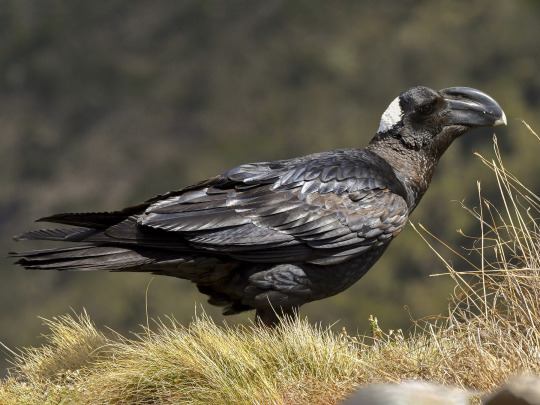

12K notes
·
View notes
Text
Not to critique evolution, but I would think orange and black stripes wouldn’t be as good for camouflage in a forest as, say, green and black would.
314K notes
·
View notes
Text
considering repurposing this blog 2 be a blog for posting/rbing things related to biology in general, that isnt daily but jist like. when i feel like it.
#its not doing anythinf else jist laying here#but re proposing an abandoned blog feels weeeeirdd#the posting everyday thinf was too challenging for me#& herpetology is not my current primary biology intrest anymore so
2 notes
·
View notes
Photo

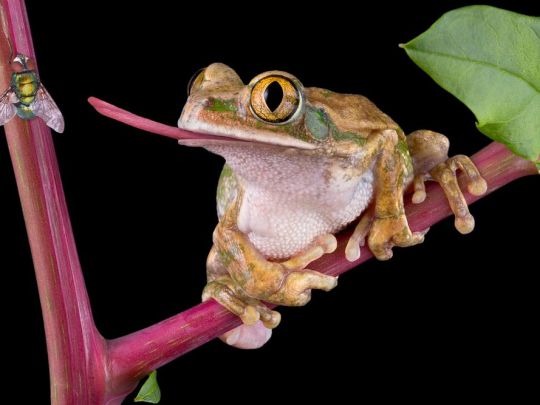

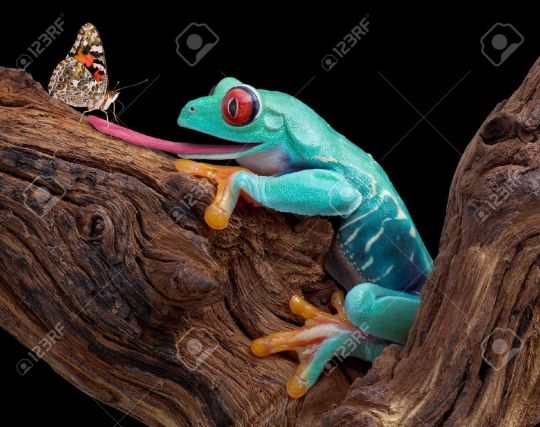
See, if you google “frog tongue” you’ll get these fake as hell photoshops because a frog’s real tongue isn’t really much longer than its skull.
These other photos are real ones, most of them extended about as far as they go:
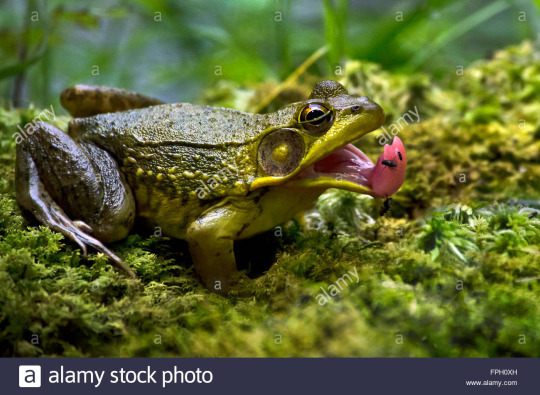

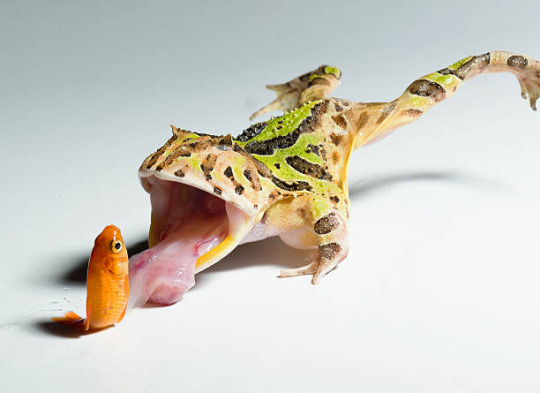
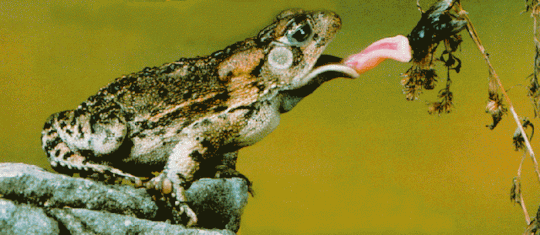
Here’s pretty much the VERY longest their tongues ever look:
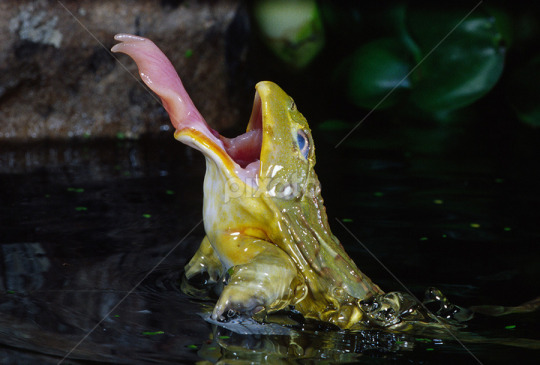
And even this isn’t as long as it looks, because like I mention in a other post, the tongue begins at the front rather than the back of their mouth. What’s actually cool and unique about it is that it therefore has to fold backwards to fit inside the mouth and flips forward to catch bugs. There aren’t perfectly clear photos of that so here’s more doodles:
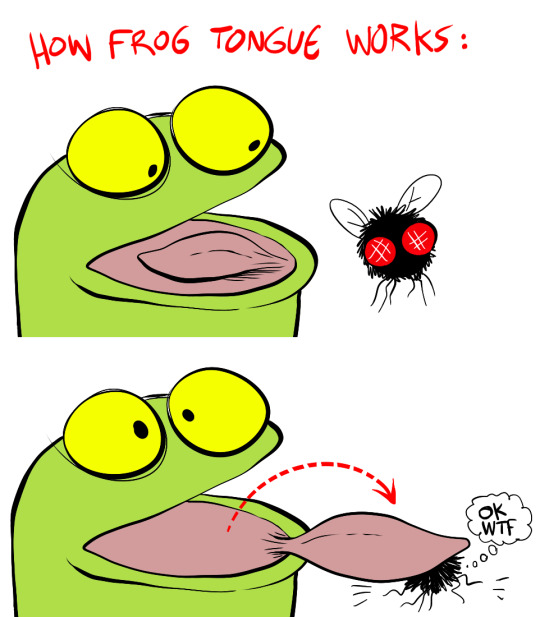
37K notes
·
View notes
Text
nvm this blog is dead until my frog fixation becomes my main fixation again im sorry jbsjfnsbd
sorry about the long ass hiatus, my life has been a mess latley...ill prob start posting again soon
#frog 'of the day' was more 'i talk about frogs on this blog'#rather than daily being the focous#anyway
7 notes
·
View notes
Text
sorry about the long ass hiatus, my life has been a mess latley...ill prob start posting again soon
7 notes
·
View notes
Text
Reach WITH IN To your LOCAL bog and you may find A Friend And Boy…
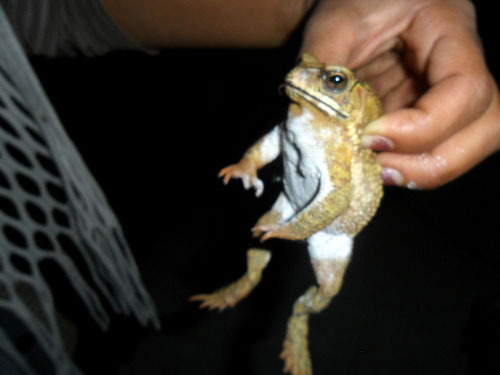
358K notes
·
View notes
Text
frog of the day :)
Rhacophorus nigropalmatus, Common names: Green flying frog, Wallace’s flying frog, Abah river flying frog, parachute frog

Habitat: In the trees of dense tropical jungles. They live pretty much entirely in trees, and only go down to the ground to lay eggs or breed.
Found in: Malaysia and Borneo
Fun fact(s): These are a type of flying (or gliding) frog. Flying frogs are all tree frogs (with the exceptions of some toads) and do not have a genus, family, or subfamily all to themselves. They are unexpectedly scattered all throughout various groups. Wallace’s flying frog is among one of the bigger flying frogs, growing up to be about 4 inches in length.
They often lay their eggs in the wallowing holes of the Asian rhino, which is an endangered species.

#frog of the day#Rhacophorus nigropalmatus#GENUS: Rhacophorus#FAMILY: Rhacophoridae (shrub frogs)#shrub frogs#tree frogs#non-true tree frogs#frog tag#my post#species highlight
150 notes
·
View notes
Text
frog (family) of the day :)
I’ve decided I will start doing entries not just on individual frog species, but frog families!
The first edition to this will be the centrolenidae family! They are part of the hyloidea clade, and known by the common name “glass frogs”

Emerald glass frog (espadarana prosoblepon) - (Image source)
Taxonomy: There are two subfamilies and 12 genuses, meaning there are actually a lot of them. There is a common misconception that there are few, or even only one glass frog. They are often just listed in those little “Cool frog” articles as “the glass frog”, as if they aren’t a very big family.
The frog I’ve most often seen mistaken as “the” glass frog, the one and only, is hyalinobatrachium dianae, Diane’s bare-hearted glass frog, which was actually only discovered recently, in 2015.

Diane’s bare-hearted glass frog (hyalinobatrachium dianae) - (Image source)
The two subfamilies are called centroleninae and hyalinobatrachinae, with the former being a much larger group.
Location: Central America and South America. They are native to South America but their populations have spread.
Description: Most of them are green, though some are other colours. Each species has transparent and translucent skin, though where and how much varies. Most of them have very translucent stomachs with non or only slightly translucent skin otherwise, though some are more fully translucent.

Upper Amazon glass frog (Hyalinobatrachium munozorum) - (Image source)
They have big sticky toe pads, and climb in and often live in trees, but are not in the true tree frog family. They are really similar to true tree frogs in a lot of ways, including their body structure, with their long front limbs. In fact, they were originally classified in the hylidae family, but later moved.
They are all pretty small. The largest species grows up to 7 inches, but most are much, much smaller.
They have big round eyes. Their eyes face forward on their heads, which is one of the things that caused them to be moved from the hylidae family.
They live mostly in trees, but come down in mating seasons and congregate in rivers and streams. They lay their eggs on leaves. All species have young that go through the tadpole process. They live in tropical forests, their most preferred kind being cloud forest.
The frog genus hyloscirtus, which actually IS in the hylidae family, is the only other group of frogs that has species with transparent skin. This makes them mistakable for glass frogs and vice versa. They look similar in a good amount of other ways too. A major way of differentiating them, is their eyes tend to be smaller and are not forward facing.
#frog family of the day#FAMILY: Centrolenidae (glass frogs)#glass frogs#frog of the day#species highlight#frog tag#my post
62 notes
·
View notes
Text
frog of the day :)
Oreophrynella nigra, Common name: pebble toad

Habitat: Rainforest mountains, on steep rocky slopes and cliffs.
Found in: Bolivia, Venezuela, Guyana, Suriname, French Guinea
Fun fact(s): They aren’t powerful jumpers which sucks because of their habitat, so they have the ability to tighten their muscles and roll into a ball when threatened and tumble down rocks safely, which is a quick getaway, and often makes them be mistaken for pebbles.
Their texture and colour also makes them look pebble-like, which helps with this!
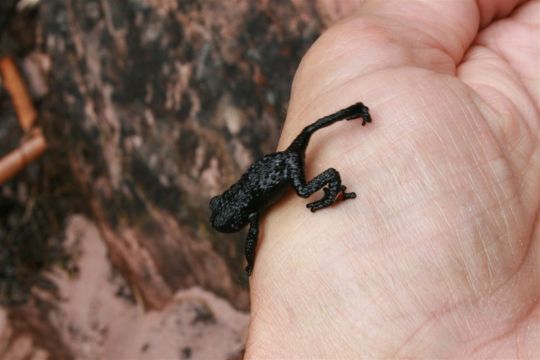
#Oreophrynella nigra#GENUS: Oreophrynella#FAMILY: Bufonidae (true toads)#true toads#toads#frog of the day#my post#frog tag#species highlight
14 notes
·
View notes
Text
frog of the day :)
Ceratophrys ornata, Common names: Argentine pacman frog, ornate horned frog, Argentine wide-mouthed frog

Habitat: Swamps, bogs and other shallow bodies of water. Near grassland areas.
Found in: South America and Africa. Most common in Brazil, Uruguay and Argentina.
Fun fact(s): They are the most common species of pacman frog, a very unique and interesting frog family!
They are large frogs, growing 5 to 7 inches in length, on top of this, pacman frogs are characterized for being very wide as well, making this guy even bigger.
Being pacman frogs, they are carnivorous frogs, who go after some pretty large prey. Pacman frogs are known to eat anything that can fit in their, very large for a frog, mouths. In the wild, an Argentine pacman frog’s diet would consist mainly of mice, small reptiles, spiders and locusts.
Pacman frogs, including the Argentine pacman frog, are popular as pets. The Argentine pacman frog’s diet in the wild is somewhat hard to recreate, but pets are usually fed large locusts and crickets, and sometimes live fish.
Their tadpoles can make distress calls, and they were the first species of frog recorded to be able to do this


#frog of the day#.GENUS: Ceratophrys#Ceratophrys ornata#FAMILY: Ceratophryidae (pacman frogs)#pacman frogs
70 notes
·
View notes
Text
frog of the day :)
Another only-sorta frog of the day, wherein I talk about the alternate colourations of a frog I’ve already written about here. This time it’s about my previous entry, dryophytes chrysoscelis, Cope’s grey tree frog!
The albino colouration of this guy is pretty cool- they’re PINK! Which is the rarest colour for a frog to be!


#frog of the day#different colourations#dryophytes chrysoscelis#GENUS: dryophytes#FAMILY: Hylidae (true tree frogs)#true tree frogs#tree frogs
36 notes
·
View notes
Text
frog of the day :)
Dryophytes chrysoscelis, Common names: Grey tree frog, Cope’s grey tree frog, Indiana tree frog, Southern grey tree frog,

(Image source)
Habitat: Live in trees in woodlands, usually high up in the trees. Have been known to travel to more open, sometimes even urban areas, in order to find a water source, as they are one of the tree frog species that mate in water in the spring.
Found in: The US & Canada
Fun fact(s): They are easily mistaken for their sister species, dryophytes versicolor, also called the grey tree frog, but sometimes differentiated by being called the Northern grey tree frog. The only easily identifiable difference between the two is their mating call, the other differences are in their distribution and number of chromosomes.

(Image source)
#GENUS: Dryophytes#FAMILY: Hylidae (true tree frogs)#true tree frogs#frog of the day#tree frogs#Dryophytes chrysoscelis
37 notes
·
View notes
Text
frog of the day :)
This adorable little guy is theloderma vietnamense, Common name: South- Vietnamese bug-eyed frog

(Image source)
This frog is also in the “mossy frog”, or theloderma genus, same ass the much more famous Vietnamese mossy frog, theoloderma corticale!

(Image source)
15 notes
·
View notes